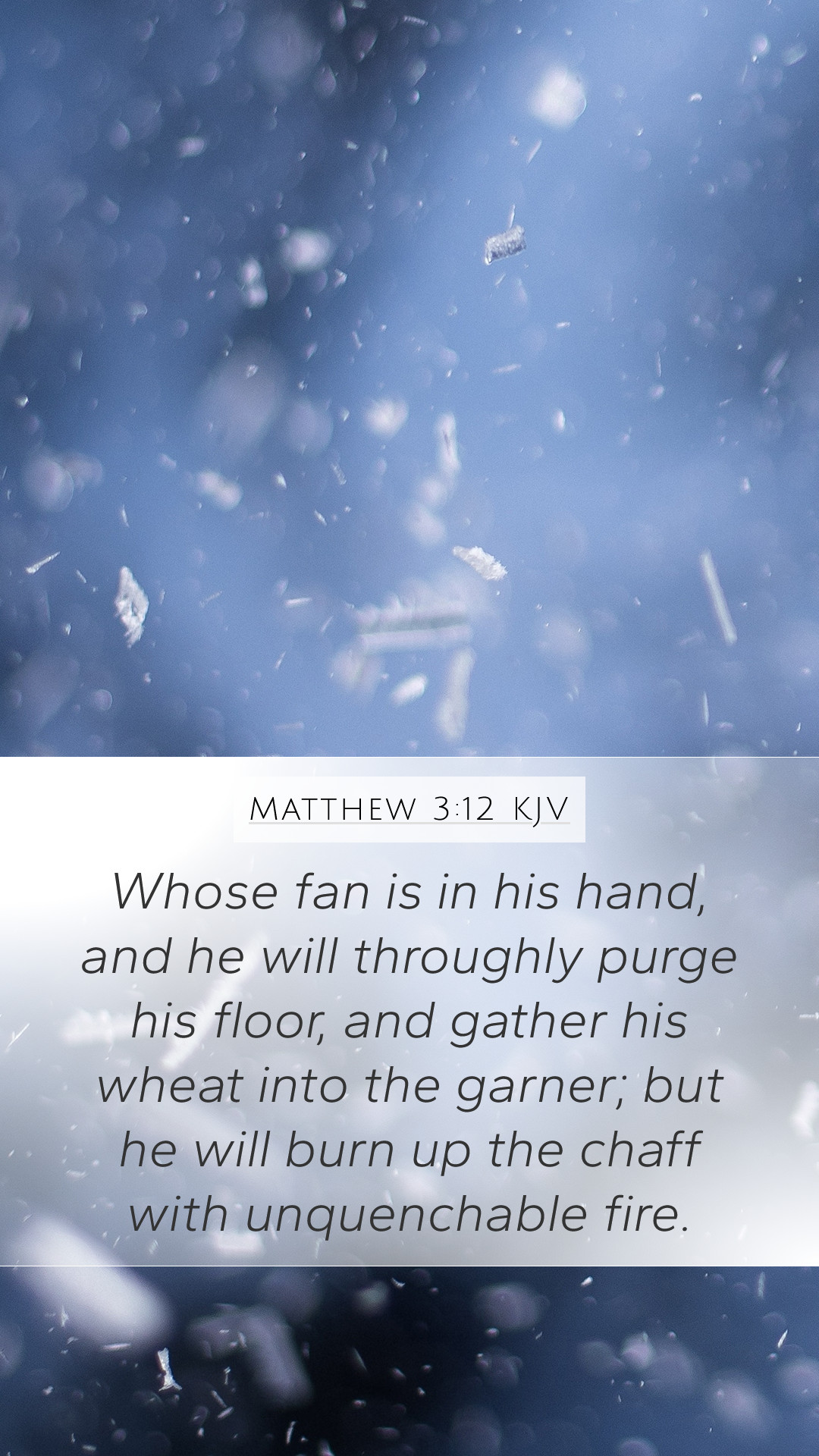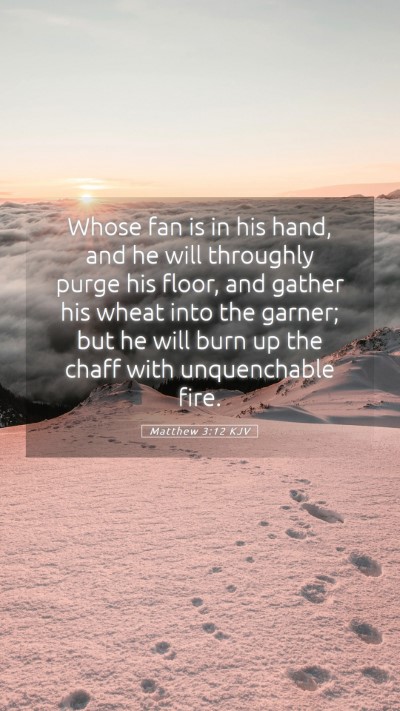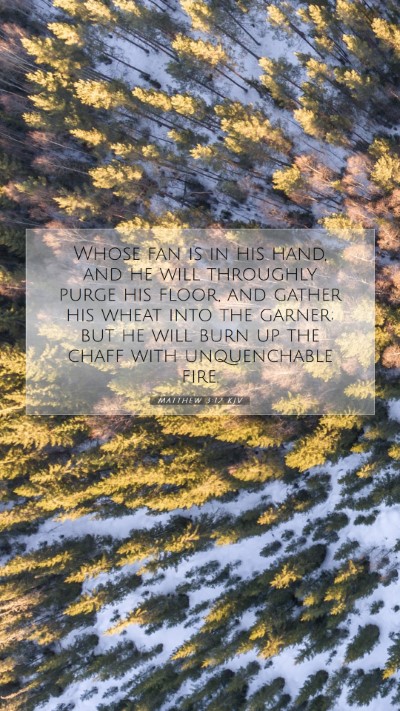Understanding Matthew 3:12
Verse: "Whose fan is in his hand, and he will thoroughly purge his floor, and gather his wheat into the garner; but he will burn up the chaff with unquenchable fire." - Matthew 3:12 (KJV)
Bible Verse Explanation
This verse, found in the Gospel of Matthew, is part of John the Baptist's proclamation concerning the coming Messiah, Jesus Christ. It uses agricultural imagery familiar to its audience, making profound theological points about judgment, purification, and the nature of Christ’s ministry.
Bible Verse Commentary
- Matthew Henry: This commentary emphasizes the contrast between the wheat and the chaff, whereby the wheat symbolizes the righteous who are gathered by Christ, while the chaff represents the unrighteous, who face judgment. The fan signifies His authority to separate true believers from those who merely outwardly follow Him.
- Albert Barnes: Barnes highlights the significance of the “fan” as a metaphor for divine judgment. He explains that Christ will purge His floor—indicating the world or the church—and will judge each person according to their faithfulness and adherence to God's word. The chaff, being useless, will be disposed of in unquenchable fire, symbolizing eternal judgment.
- Adam Clarke: Clarke offers detailed insights on the agricultural metaphor used by John the Baptist. He explains that the act of purging the floor means refining and cleaning up the harvest. For Clarke, this verse epitomizes the message of separating good from evil, with a stern reminder of the consequences facing those who reject God's message of salvation.
Biblical Exegesis
Analyzing the historical context, Matthew 3:12 occurs during a time of spiritual preparation among the Jewish people, who were anticipating the Messiah. John the Baptist's ministry serves both as a herald of Jesus and a call to repentance. The use of fire as a symbol serves as a warning about the devastating consequences of sin, and the urgency of choosing to align with righteousness.
In-depth Bible Verse Analysis
This verse transitions the reader from John's role as the forerunner to the revelation of Christ's redemptive work and His authority over judgment. The “unquenchable fire” evokes Isaiah's prophecy, reminding readers of God's holiness and the inevitable judgment that accompanies rejection of divine truth.
Application of Matthew 3:12
For modern audiences, the applications are multidimensional. Believers are encouraged to live righteously in light of the coming judgment, to seek purity in their spiritual lives, and to be actively engaged in sharing the message of redemption. Furthermore, it serves as a call to reflect on one's spiritual state—are you wheat or chaff? Are you bearing fruit that aligns with God’s purposes?
Related Bible Cross References
- Luke 3:17: A parallel account that similarly discusses the winnowing process and judgment.
- Matthew 13:30: The parable of the wheat and the tares, illustrating the final separation of the righteous from the wicked.
- Malachi 3:2-3: Discusses the day of the Lord's coming and purification of the sons of Levi.
Conclusion
Matthew 3:12 serves as a powerful reminder of the dichotomy between righteousness and unrighteousness. This verse informs our understanding of Scripture, enhances Bible study insights, and encourages believers to reflect on their lives in anticipation of Christ’s return.
Final Thoughts on Bible Verse Meanings
Understanding Bible verses like Matthew 3:12 requires diligent study and reflection. It invites deeper examination of personal beliefs and the overarching narrative of redemption found within the whole of Scripture. Engaging in online Bible study and utilizing various Bible study tools can greatly enhance one’s comprehension of these vital teachings.


